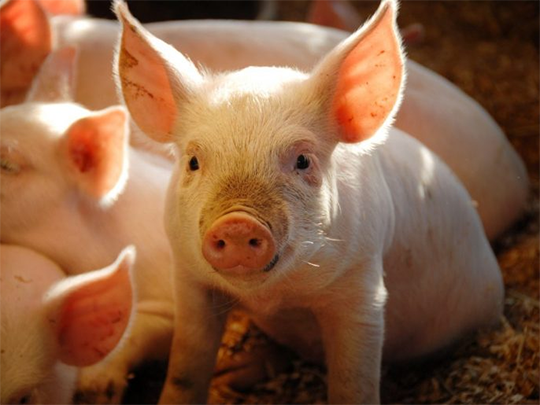What is the effect of heat stress in monogastrics (part 4)?
Heat stress influences many factors: Feed intake decreases, movement is restricted - to prevent increased heat generation in the body. Reduced desire to move or increased water absorption are immediately recognizable symptoms of heat stress. But do you also know about cellular reactions to heat stress?
Heat stress influences many factors: feed intake decreases, movement is restricted – to prevent increased heat generation in the body. Generally speaking, performance and productivity suffer from heat stress in livestock. In part 1 and 2 of our series we have already dealt with the effects of heat stress on the intestine and the intestinal barrier in monogastric animals. In part 3 of our series, we took a closer look at the influence of heat stress of the monogastric animal on the immune system. Now we want to address another question:
What kind of metabolic changes occur during heat stress?
What to discover in this article?
- the initial cellular response to heat stress
- the relationship between heat stress and the production of reactive oxygen species
- what Insulin has to do with heat stress
Did you know?
Depending on activity and body weight, the human body generates a power of about 100 watts. This corresponds to the heat output of about 2 light bulbs.
Reduced desire to move or increased water absorption are immediately recognizable symptoms of heat stress. But do you also know about cellular reactions to heat stress?
Metabolic acclimation to heat stress in monogastric animals
The initial cellular response to heat stress seems to consist of an increase in energy expenditure. Mitochondrial activity is increased for this purpose to produce enough ATP for essential cellular processes – like Na+/ K+-ATPase activity.
The up-regulation of mitochondrial capacity is linked to a higher production of reactive oxygen species. This results in an increased level of endogenous oxidative stress (Akbarian et al., 2016).
Consequently…

…heat-mediated oxidative stress produces alterations in cell signaling. This affects heat shock protein expression as well as damage to the intestinal barrier and hyperthermia-induced apoptotic cell death (Katschinski et al., 2000; Lambert et al., 2002).
A study with rats has provided evidence for the increased energy consumption during hyperthermia. In this study by Hall et al. (2001), liver glycogen levels declined by about 20% after exposure to heat stress for two hours.
Whole-body hyperthermia induces re-distribution of blood from internal organs to the periphery to intensify heat loss from the body (Lambert et al., 2002). Due to this shift, cellular hypoxia and metabolic stress are induced in the intestinal tract (Hall et al., 2001).
Since heat stress affects especially the insulin signaling pathway, changes in whole-body energy metabolism are partially caused through changes in glucose uptake and metabolism. This hypothesis is supported by the results of several studies: For example, Pearce et al. (2013) and Fernandez et al. (2015) have shown an increased intestinal glucose uptake in heat stressed animals. Different other tissues might also show alterations in individual glucose uptake and utilization.
In this context, a higher insulin receptor substrate-1 abundance in skeletal muscle was observed, but not in adipose tissue of pigs (Fernandez et al. (2015). The differential effects of heat stress in various tissues might induce changes in energy deposition and cause shifts in lean body mass of the animals. This phenomenon was described for postnatal body composition of dams exposed to heat stress during gestation.
Did you know?
The up-regulated expression of heat shock proteins is an endogenous mechanism conferring cells protection against stress. For instance, as shown by Gu et al. (2012), heat shock protein 70 has been shown to protect intestinal mucosa of heat-stressed broilers by improving antioxidant capacity and inhibiting lipid peroxidation.

Moreover, piglets from sows exposed to heat stress (28°C to 34°C) during the first half of gestation showed a reduced longissimus dorsi cross-sectional area and an increased subcutaneous fat thickness and blood insulin concentrations, compared to piglets from sows kept under normal temperature conditions (18°C to 22°C) (Boddicker et al., 2014).
Interestingly, Fernandez et al. (2015) reported an increased insulin receptor substrate-1 abundance in skeletal muscle but not in adipocytes. They suggest a higher energy uptake into the muscle but not into fat tissue. In summary, these results suggest that further research is needed to evaluate the detailed mechanism as to how heat stress-induced metabolic changes in dams cause an increased fat deposition in piglets.
References upon request
Discover more about heat stress management in poultry

Anne Oberdorf
Anne has always been fascinated by the unknown, the diversity and beauty of nature. Her love for nature brought her to Delacon in 2018 after studying agricultural sciences, where she worked as Technical Communications Manager and later as Product Manager Aquaculture. Since February 2021, she has been taking a new, natural career path outside of Delacon.










